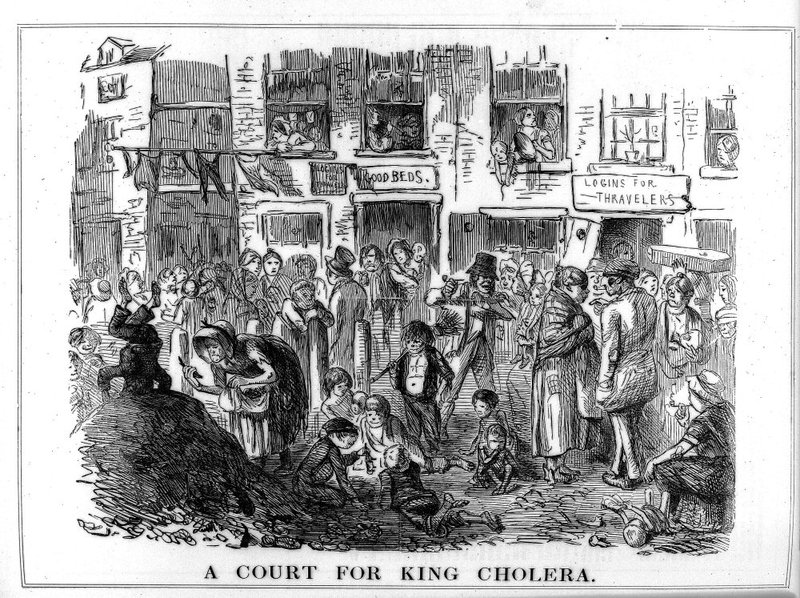Introduction
The Cholera epidemics of the 19th century profoundly altered public health, government responses, and social structures throughout the United Kingdom, ultimately exposing the vulnerabilities of rapid urbanization and the importance of hygiene.
Prior to the catastrophic waves of crisis that the vibrio cholerae bacterium brought, the United Kingdom lacked a proper sense of sanitization infrastructure and an overcrowding of livable spaces. Additionally, the prevailing miasma theory of contagion meant populations thought sickness was spread through foul odors and environmental wrongs rather than bacteria or germs. For our digital gallery, our collection of primary sources spans medical journals, maps, images, and charts which all closely document the spread of Cholera in the UK between 1817-1867. They spell out a larger narrative of medical discovery and the safeguarding of health and wellbeing for the population. Notably, these sources all come from important “Medical Men” - also referred to as Medical Doctors - who registered their findings and methodology while dealing with Cholera in clinics, homes, and village settings. Using this array of primary sources offers unique perspectives, thought processes, and insight into the development, history, and practice of medicine alongside providing contextual understanding from people dealing with Cholera first hand. Our secondary sources include websites, maps, charts, and images that allow a more visual approach to the narrative of this disease. Our goal is to paint an in depth picture of what 19th century medicine was like, to prove the importance of medical evolution because of the Cholera epidemic, alongside discerning how the daily lives of people were torn apart and negatively impacted by the spread of this treacherous disease. The social and familial consequences of Cholera in the United Kingdom throughout the mid 19th century are also clearly explored through our compiled gallery of sources and thus we hope to portray these sympathies as historical actors experienced emotional struggles as well. Expectantly, we aim to allow gallery viewers the chance to develop their own critical inquiry and analysis of these trying times by examining discrepancies, hidden narratives, and conflicting accounts, and to challenge what they thought to be conventional understandings of medicine.
Conclusively, this exhibit on Cholera will provide valuable insight into the cultural, social, and economic disparities of this epidemic while examining the scientific and multifaceted dimensions of medicine during the mid 19th century in the United Kingdom.
